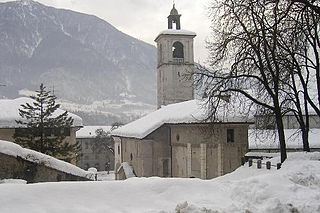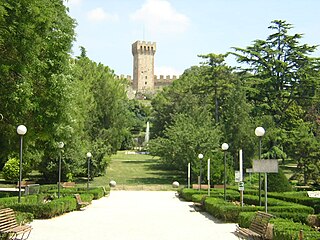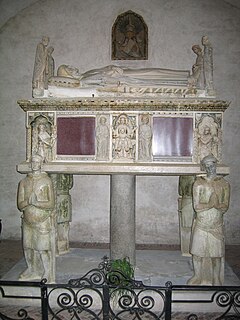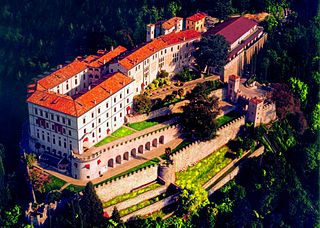
Veneto or Venetia is one of the 20 regions of Italy. Its population is about five million, ranking fourth in Italy. The region's capital is Venice while the biggest city is Verona.

Padua is a city and comune in Veneto, northern Italy. Padua is on the river Bacchiglione, west of Venice. It is the capital of the province of Padua. It is also the economic and communications hub of the area. Padua's population is 214,000. The city is sometimes included, with Venice and Treviso, in the Padua-Treviso-Venice Metropolitan Area (PATREVE) which has a population of around 2,600,000.

The Veneti were an Indo-European people who inhabited northeastern Italy, in an area corresponding to the modern-day region of Veneto.

Vittorio Veneto is a city and comune situated in the Province of Treviso, in the region of Veneto, Italy, in the northeast of Italy, between the Piave and the Livenza rivers.

Feltre is a town and comune of the province of Belluno in Veneto, northern Italy. A hill town in the southern reaches of the province, it is located on the Stizzon River, about 4 kilometres from its junction with the Piave, and 20 km (12 mi) southwest from Belluno. The Dolomites loom to the north of the town.

Belluno, is a town and province in the Veneto region of northern Italy. Located about 100 kilometres north of Venice, Belluno is the capital of the province of Belluno and the most important city in the Eastern Dolomites region. With its roughly 36,000 inhabitants, it is the largest populated area of Valbelluna. It is one of the 15 municipalities of the Dolomiti Bellunesi National Park.

Northern Italy is a geographical and cultural region in the northern part of Italy. Non-administrative, it consists of eight administrative Regions in northern Italy: Aosta Valley, Piedmont, Liguria, Lombardy, Emilia-Romagna, Veneto, Friuli-Venezia Giulia and Trentino-Alto Adige. As of 2014, its population was 27,801,460. Rhaeto-Romance and Gallo-Italic languages are spoken in the region, as opposed to the Italo-Dalmatian languages spoken in the rest of Italy. The Venetian language is sometimes considered to be part of the Italo-Dalmatian languages, but some major publications such as Ethnologue and Glottolog define it as Gallo-Italic.

Este is a town and comune of the Province of Padua, in the Veneto region of northern Italy. It is situated at the foot of the Euganean Hills. The town is a centre for farming, crafts and industry worthy of note.

Oderzo is a town and comune in the province of Treviso, Veneto, northern Italy. It lies in the heart of the Venetian plain, about 66 kilometres to the northeast of Venice. Oderzo is crossed by the Monticano River, a tributary of the Livenza.

Cordignano is a town and comune with 7,020 inhabitants in the province of Treviso, Veneto, Italy.

Mussolente is a town in the province of Vicenza, Veneto, northern Italy. It is north of SS248 state road.

The Diocese of Vittorio Veneto is a Roman Catholic diocese in northern Italy, with capital in Vittorio Veneto. It was historically known as Diocese of Ceneda, the name being changed in 1939.
Gherardo III da Camino was an Italian feudal lord and military leader. He is generally considered the most outstanding member in the da Camino family.
Rizzardo IV da Camino was an Italian nobleman and military leader, a member of the da Camino family and lord of Treviso.

The da Camino were an Italian noble family whose fame is connected to the mediaeval history of the March of Treviso, a city of which they were lords for a while.

CastelBrando, former Castrum Costae, is a medieval castle situated on a dolomite limestone rock at an elevation of 370 m (1,210 ft) above sea level, overlooking the villages of Cison di Valmarino and Valmareno, Northern Italy. The name CastelBrando is due to the name Brandolini, the ancient family from Forlì, who were the Lords of the castle.
Guecellone II da Camino was an Italian medieval noble and military leader, belonging to the Da Camino family.
Biaquino II da Camino was an Italian nobleman and military leader, a member of the da Camino family and lord of Treviso.
Tolberto III da Camino (1263–1317) was an Italian nobleman and military leader, a member of the Da Camino family.
Guecellone VII da Camino was an Italian nobleman and lord of Treviso.













